Complete how to use all backup and restore tools on Windows 10
Living in the digital world, what we get from it is convenience. However, sometimes they cause us some disadvantages such as losing the list of files that you have just set up carefully? Your photos are no longer stored in albums, your music is no longer in the folder. Recovering a computer or a defective drive can be a real pain if you don't take precautions.
While some people just need to drag and drop files onto the hard drive, it is safe for others to need a more thorough copy - a backup of all things is organized and updated including the system your operator. You should back up on two separate locations like cloud storage and external drives. This protects you from threats including fire or flood.
Windows 10 has many built-in backup and recovery tools so that users can select, exploit and use for the purpose of protecting their data and systems safely. Microsoft brought back the Windows Backup backup tool that has been 'removed' in Windows 8.1, the File History function has also been preserved and some backup options on the cloud and other system restore in important cases .
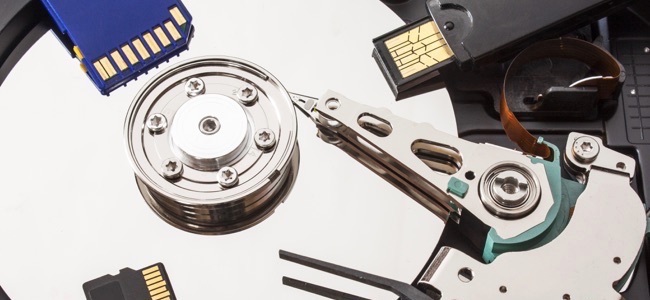
1. File History
File History is a useful backup feature integrated and introduced first in Windows 8, and this tool reappears on Windows 10. The tool is still considered a useful option for backup. And so the File History is integrated on both Settings and Control Panel , while the Backup feature of Windows 7 is only available on the Control Panel.
However, besides, File History also has drawbacks, it is a tool that only backs up files and data of users on the computer, but cannot backup and restore the entire operating system. You can add drives or folders you want to back up to ensure the safety of important data.
Once completed, Windows will automatically create backups, copy your files and data. And you can use these backups to restore all files and data if accidentally deleted. You can also batch restore or just restore one or several specified files or folders.

In addition, readers can refer to how to use File History to backup and restore data here.
2. Backup and Restore (Windows 7)
The Backup and Restore function on Windows 7 is also integrated into Windows 10 by Microsoft. Although this tool also appears in Windows 8, Windows 8.1 has been removed. Backup and Restore is also known as Windows Backup.
This tool allows you to use an old backup copy from Windows 7 operating system to a Windows 10 computer. Alternatively, you can use it to back up Windows 10 computers similar to the way you back up. Windows 7 computer.
Unlike a Backup History solution, you can use Backup and Restore to easily create a backup of everything on your hard drive.
You can find the Backup and Restore tool from Windows 10 Control Panel or type the keyword ' backup ', then click Setup backup to start the backup setup.
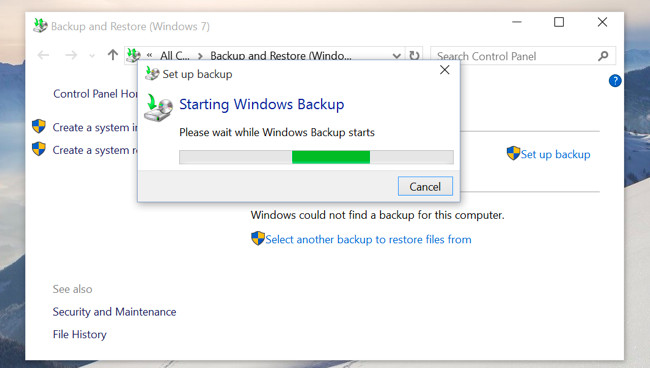
3. OneDrive
In fact, OneDrive is known as a cloud storage solution rather than a data backup solution. Files stored on OneDrive will be stored in your online OneDrive account, so you can access files anywhere and on any device.
If you refresh Windows, or use Windows on another device, you only need to log in to your Microsoft account and all your OneDrive files will be available in File Explorer.
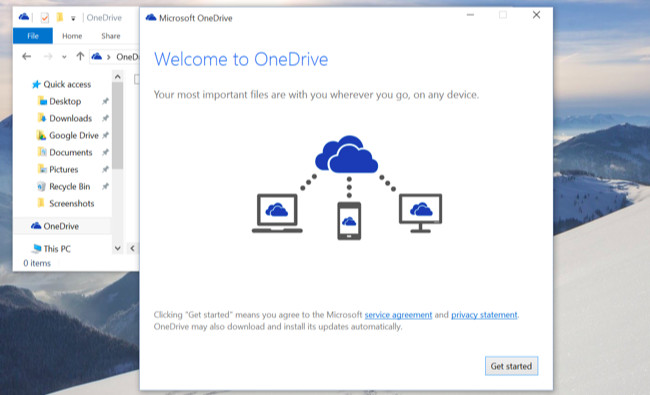
4. Reset This PC function
The Reset This PC function is a feature that cleans the operating system and returns Windows to its default default setting for use if it fails.
This feature is also necessary for you to never have to reinstall Windows from scratch using a DVD drive or USB drive. Just reset your computer and everything will revert to its original default setting.
On Windows 8 users have the options to Refresh this PC and Reset this PC. On Windows 10, only one option is Reset this PC. Just open the Settings app, then select Update & security => Recovery and click the Get Started button under Reset this PC.
If you want to refresh Windows and keep the data, applications, settings, then select Keep my files . If you want to refresh Windows completely, select Remove everything .
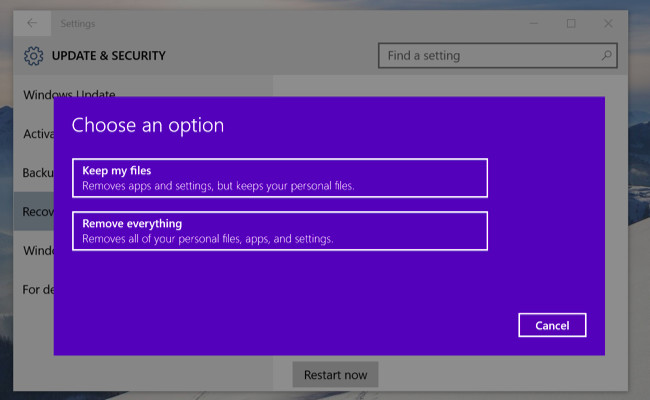
5. System Image Backups
Microsoft hid this feature in the first version of Windows 8.1, but the company had to "bring back" the feature after receiving dramatic feedback from users, and thus the feature still exists on Windows 10. .
You can find this feature by opening Control Panel and looking for Backup and Restore (on Windows 7). Just click ' Create a system image ' in the left corner of the window or open the File History panel and select ' System Image ' in the sidebar .
Unlike the methods mentioned above, System Image Backups allows you to create an image file for the entire current Windows system, including the operating system, installation programs, settings and files. user information.
This backup can be stored on an external hard drive, burned to a DVD, or on a network storage drive.
In fact, users should not use this feature. This is because we can use the Reset this PC feature to restore the operating system to its default state and restore individual files, reinstalling all programs manually. This will save a lot of backup storage space.
However, this feature is still integrated and still useful if you want to create a backup of the system image without the support of third-party tools like Norton Ghost or Acronis TrueImage.
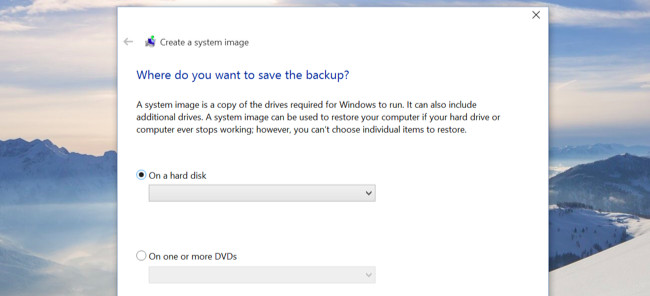
6. Advanced options (advanced options)
The advanced options integrated on Windows 10 are similar to those in Windows 8. To access the advanced options, first open the Settings => Update & security => Recovery application and click Restart now under the item. Advanced startup. You can also press the Shift button when selecting Restart on the Start Menu.
From here, you can restore Windows from a system image file you created, using the system restore tool to fix errors and perform other system maintenance tasks.
If you are running a Preview version of Windows, this menu will allow you to restore the previous build version in case the current build version does not start, or does not work properly. In addition, this menu also appears when your Windows 10 computer cannot be restarted.
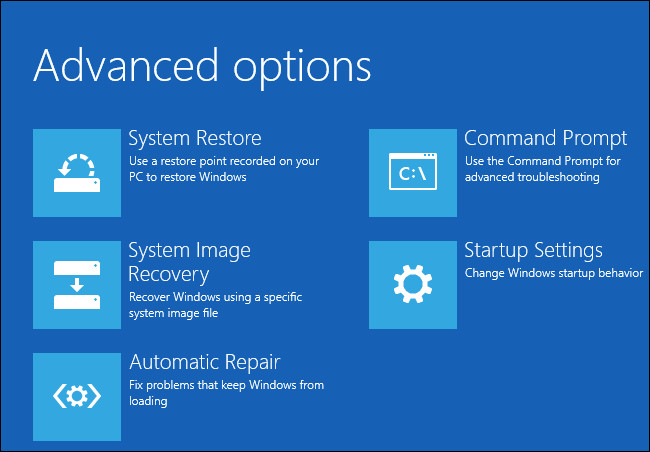
7. Recovery Drive Creator
You can also create a system recovery USB, allowing you to access advanced options, even if the Settings in Windows 10 are completely 'corrupted' and you cannot access this menu.
To do this, open Control Panel then type in the search box " Recovey ". Click on the Recovery icon and you will see a list of advanced recovery tools. Click Create a recovery drive to create a recovery USB drive.
Alternatively, you can import RecoveryDrive.exe into the Search box on the Start Menu and then press Enter to access the tool directly.
Boot from the drive you created to access recovery tools if Windows 10 doesn't allow you to access it in the usual way.
Windows 10 no longer provides a separate recovery partition, so this tool will not allow you to remove recovery partitions from your computer.
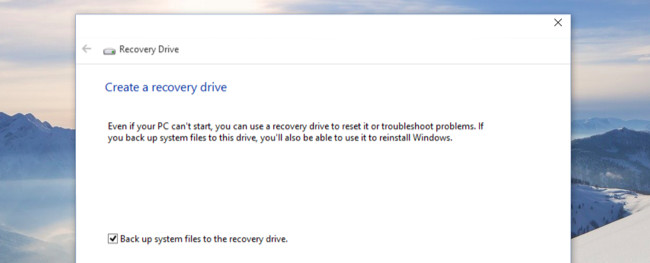
8. Use a backup service
Using online backup services such as IDrive or CrashPlan in the long run will cost more than an external hard drive, but these services also help you feel secure when a fire or flood or other situations where backups occur You can be completely destroyed.
These services often have an application installed on your computer, it scans for protected files (such as system files and important documents), encrypts them and then sends them Store in the cloud for careful storage. You can often create images of the system to keep it safe in the event of an overall fault.
Many online backup companies will actually send you a drive containing your encrypted data in the unlikely event. In addition, you can also access online and sync files - some even have File Explorer integration. If you are worried about external situations that damage your backup copy of your computer, you should consider online backup services.
9. Setting up NAS system
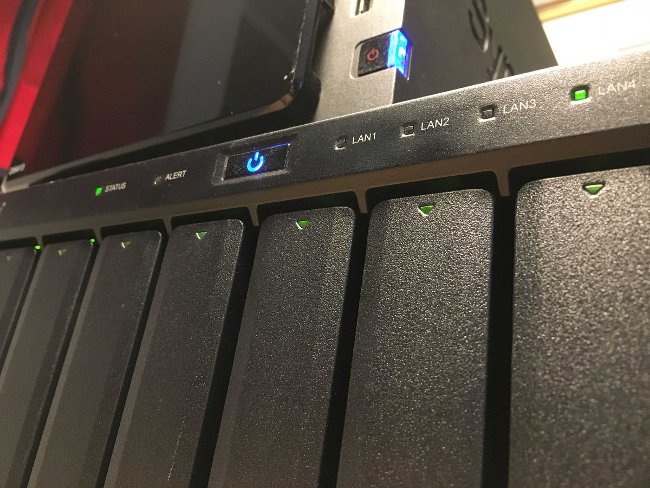
Network Attached Store (NAS) is the drive group (you can see NAS single drive) connected via the network. Any user on the network can access the NAS. With this feature, they are suitable for backing up multiple computers at the same time or for those who want to create home media servers.
Depending on the NAS used, you can create a RAID system that will keep backup files as soon as bad cases happen to your PC and in the NAS. With this method it is like creating your own cloud storage in the house but it will tend to be cheaper over time. Although NAS systems are becoming easier to use, they may be best suited for those with long experience in computers.
Refer to some of the following articles:
- How to backup and restore Windows in just 10 minutes with Acronis True Image
- Restore Windows computer with System Restore
- Instructions for creating backup and restore points (Restore Point) on Windows 10
Wish you have moments of fun!
You should read it
- Instructions for using File History to backup and restore data
- How to backup and restore Windows 10 from System Image
- How to use Iperius Backup Free to back up Windows data
- Instructions to Backup and Restore Windows 10
- Configure the System Restore feature in Windows 10
- Delete log information in Windows Server Backup
- How to backup and restore Windows in just 10 minutes with Acronis True Image
- How to back up automatically on Windows 10
May be interested
- Guide to backup and restore device drivers in Windows
 it's a good idea to back up your device drivers before performing a clean install to make it easy to restore any of these drivers if needed later. this guide will show you how to back up and restore all 3rd party device drivers on a windows 10 pc.
it's a good idea to back up your device drivers before performing a clean install to make it easy to restore any of these drivers if needed later. this guide will show you how to back up and restore all 3rd party device drivers on a windows 10 pc. - How to backup and restore Windows in just 10 minutes with Acronis True Image
 when your windows computer crashes or fails, the best way to fix these problems is to restore the system. the use of popular software to reinstall windows often takes a lot of time. to save your valuable time, you can use acronis true image software.
when your windows computer crashes or fails, the best way to fix these problems is to restore the system. the use of popular software to reinstall windows often takes a lot of time. to save your valuable time, you can use acronis true image software. - How to use Timeshift to backup and restore a Linux system
 fortunately, there are system restore tools that take snapshots of your files and settings, which you can restore on your system to bring it back to a previous operating point.
fortunately, there are system restore tools that take snapshots of your files and settings, which you can restore on your system to bring it back to a previous operating point. - Instructions for using File History to backup and restore data
 file history is one of the main backup tools integrated on windows 10, this is a backup tool that contains all the features. file history was first introduced on windows 8 operating system. after setting up file history, you can connect an external hard drive to your computer and windows will automatically back up all files.
file history is one of the main backup tools integrated on windows 10, this is a backup tool that contains all the features. file history was first introduced on windows 8 operating system. after setting up file history, you can connect an external hard drive to your computer and windows will automatically back up all files. - How to backup SMS messages with SMS Backup and Restore
 backing up messages on the cloud application will help us find what we need, which can save memory on android devices.
backing up messages on the cloud application will help us find what we need, which can save memory on android devices. - Backup and restore Android phone with Titanium Backup
 if you encounter a problem with backing up your android device, including everything from system apps to data, titanium backup is the most convenient and appropriate tool. in the following article, we will introduce you some key features and usage of this utility ...
if you encounter a problem with backing up your android device, including everything from system apps to data, titanium backup is the most convenient and appropriate tool. in the following article, we will introduce you some key features and usage of this utility ... - Steps to Backup and Restore Windows 10 Driver with 1 command line in cmd
 backup and restore windows 10 driver with a single command. instructions for backing up and restoring computer drivers effectively
backup and restore windows 10 driver with a single command. instructions for backing up and restoring computer drivers effectively - Backup and Restore Wifi settings in Windows 7
 one of the new features that helps manage the network and internet connections in windows 7 is the ability to backup and restore wifi network settings. this is a very useful feature for computer users who have to manage multiple systems. the process of backing up and restoring wifi settings is easy and fast.
one of the new features that helps manage the network and internet connections in windows 7 is the ability to backup and restore wifi network settings. this is a very useful feature for computer users who have to manage multiple systems. the process of backing up and restoring wifi settings is easy and fast. - Top 5 software to Backup (Restore) and Restore (Restore) the best Computer Driver
 in the process of using the computer will be very difficult to avoid errors, so backing up the driver is necessary in case of a risk. the following article of tipsmake.com will introduce to you the 5 best software backup and restore software for your computer today, please refer.
in the process of using the computer will be very difficult to avoid errors, so backing up the driver is necessary in case of a risk. the following article of tipsmake.com will introduce to you the 5 best software backup and restore software for your computer today, please refer. - Instructions for creating backup and restore points (Restore Point) on Windows 10
 restore point, which was first introduced in windows me version, is one of the best and unique features of windows operating system, which helps users quickly restore system files to their current state. previous status without changing saved data.
restore point, which was first introduced in windows me version, is one of the best and unique features of windows operating system, which helps users quickly restore system files to their current state. previous status without changing saved data.










 How to remove unwanted video suggestions on Youtube
How to remove unwanted video suggestions on Youtube How to use Magic Actions for Youtube
How to use Magic Actions for Youtube How to enable Dark Mode on Youtube
How to enable Dark Mode on Youtube Instructions for creating a YouTube account cover photo
Instructions for creating a YouTube account cover photo How to recover iCloud data when mistakenly deleted
How to recover iCloud data when mistakenly deleted Add a tool to download high quality YouTube and Facebook videos
Add a tool to download high quality YouTube and Facebook videos